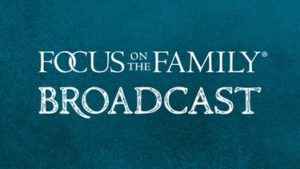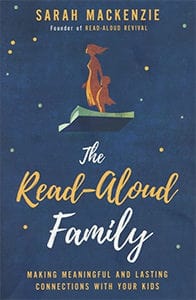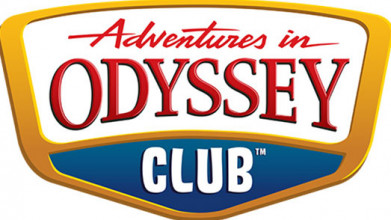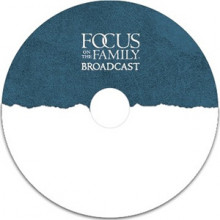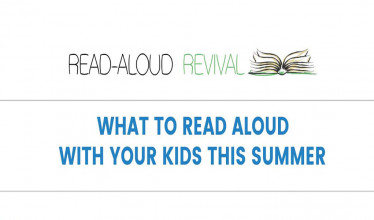John Fuller: Welcome to Focus on the Family with your host Focus president and author Jim Daly. I’m John Fuller and for the first portion of our special broadcast today, we’re privileged to speak with US Health and Human Services Secretary, Alex Azar.
Jim Daly: John, it really is an honor to have Secretary Azar with us by phone for just a few minutes as we talk about issues surrounding the coronavirus pandemic. He’s been in this post since 2018 and has also served at HHS from 2001 to 2007. So, he knows the place. He has a huge responsibility. And of course, this is such a critical healthcare crisis. Secretary Azar, thank you so much for making time to speak with us here at Focus on the Family.
HHS Secretary Alex Azar: Well, I’m delighted to be with you and your listeners again. Thank you so much.
Jim: Let me ask you. So often, HHS, the agency that you run, Health and Human Services – it’s a sprawling agency. What’s the budget and what’s your mission?
Secretary Azar: Yeah. So, we have a 1.4 trillion dollar budget. That’s trillion with a “T.” Our mission is to enhance and protect the health and well-being of all Americans. You know, we are the largest cabinet department on the face of the earth. If we were a nation, we would be the sixth largest country on the planet after the U.S., China, Japan, Germany…
Jim: Huh.
Secretary Azar: …And France. It’s the only time I’m happy to be behind France…
Jim: (Laughter).
Secretary Azar: …When it comes to government spending.
Jim: Yeah. Well, it’s amazing. It is so large, and most people don’t realize that. And, uh, what do you come in to do every day?
Secretary Azar: Well, we touch every American’s life every single day. So, we run Medicare and Medicaid. And of course, also Obamacare is in there. We have the Food and Drug Administration which regulates food and drugs, cosmetics, tobacco. So, one out of every four consumer dollars spent in the United States. We have the National Institutes of Health, the largest biomedical research institution on the planet. We have the Centers for Disease Control and Prevention, the world’s premier epidemiological disease detective organization. We run our, uh – our social welfare programs. So foster care. Something Focus on the Family, of course, has worked with us and been – is so important. But all of our – the traditional welfare programs, uh, that you will know of. We uh, just are integrated into everything. We run our chemical, biological, radiological, nuclear countermeasures programs for preparedness and response here. So, we have a sig – a very significant national security and emergency – emergency management function. So really just across the board, a mammoth department that touches everyone every day.
Jim: Yeah, it’s amazing. And I wanted to paint that picture. Thank you for doing it because I don’t think most Americans realize how big HHS truly is. You mentioned foster care. Before we get to the covid situation, let me touch on a question I’d love to ask you. Something I thought about quickly being a former foster child myself. These foster kids that are aging out in this environment. Has anybody paid attention to what can happen to these kids that are turning 18 and the check stops coming and the foster family – their time there is over because there’s no more dollars. Has anybody there at HHS – are you looking at that? What we might do? I know we’re bailing out small businesses. We’re doing lots for, you know, rightfully – for those economic reasons to take care of small businesses like that. But what about these kids that are aging out?
Secretary Azar: Yeah, it is a really important issue and it’s one we’ve been focused on. So, it comes up in a couple of different contexts. So, let’s say you have a foster kid who’s aged out. Um, and let’s say they’re one of the lucky ones and they’ve been able to go off to college, okay?
Jim: Right.
Secretary Azar: Well, they don’t have a home family. And so, if that college is now shut down, you could have a kid who was in a dormitory living a good life. Was one of our success stories and now is homeless. And so, what have we done? We’ve worked with our colleagues at the Department of Education and out of our Administration on Children and Families. And we’ve worked to highlight this issue for colleges so that they’ll keep dorms open and allow these kids to stay there so those they’re not cast out into homelessness. We’ve reached out to all of our public welfare foster care agencies to say, “We need you to reach out to the kids who’ve aged out. Get connected to them. Get them into support programs.” Don’t forget about them because they’re – it’s going to be – for those who aren’t off at college, if they if they had a job, they might now be unemployed. They might need greater connection. They don’t have that that permanent family home necessarily to reach back to. So, Lynn Johnson, our Administrator…
Jim: Yeah.
Secretary Azar: …For Children and Families, um, has been very focused on this effort and really working to protect these kids.
Jim: Well, Lynn is terrific. I know her and she’s doing a terrific job for you. All right. Let’s move to the covid situation. You’re on the task force, of course. Paint a picture of what that is like. Are you meeting every day still? And what – is there tension? You know, we – I don’t know what to believe in the media anymore because it’s all over the board, but straight from your mouth. What is going on and what is that like every day for you?
Secretary Azar: Well, first, I’ll tell you what to believe in the media anymore, which is very little.
Jim: (Laughter) Yeah. Right.
Secretary Azar: But in terms of our interactions. Listen, these are all the leaders across our government, and we meet almost a daily basis. And under the leadership of the Vice President and the President, uh, we review the latest epidemiological data. So basically, the state of the disease, what we’re seeing both in the U.S. and abroad. And then we review key issues that require policy level determination. We get reports from our FEMA administrator on especially the status of supplies being pushed out to states. Our procurement and securing of additional supplies and our work on testing. And it’s a very collegial setting. We’ve all worked together for a long time. About half the members of the task force are my direct reports…
Jim: Yeah.
Secretary Azar: …My leaders. So, we all work extremely well and professionally together. Uh, and, uh, we’re all working just to – not just to make the President and Vice President successful in this, but most importantly to help the American people. Keep them safe, but also get them back to work.
Jim: You know, when this started – I can’t remember now, seven weeks ago, eight weeks ago? You know, when many of the states began to shelter in place, it felt like there was, you know, anxiety. And you could hear it at the press briefings, et cetera. Course, Governor Cuomo was certainly adding to that anxiety with his desperation about the ventilators and things like that. Other governors jumped in, et cetera. So, there seemed to be a – somewhat of a panic about what are we going to do and what will – how will this impact, this covid-19? How is it going to impact us? Now that we’re moving through it what is your sense of the future? Is it more optimistic now? Are we less concerned about a catastrophic impact? I remember we were thinking 240,000 potential death from covid-19. How are you feeling today?
Secretary Azar: Well, I would say that we’re feeling a great deal of optimism and confidence, um, in part because of the tremendous work the President and Vice President have done leading us through this. The collaboration with our nation’s governors and the harnessing of the entire massive power of the private sector here in the United States. You know, um, a lot of our governors have learned a lot. They have become health experts. They’ve learned about their public health labs in ways they didn’t know. They’ve learned about their health systems and their capacities there. Things they didn’t know. They’ve learned how many ventilators they have, which they didn’t know at the beginning.
Jim: Yeah.
Secretary Azar: And what have we done? We have actually managed to keep the disease burden in the United States within our healthcare capacity. And if you go back and you look at what we talked about in January…
Jim: Yeah.
Secretary Azar: …When we were first getting going. When there were just dozens of cases in China. When there were, you know, less than 10 cases here in the United States. We said, “The number one goal is to delay and flatten the curve of this disease because it’s coming to America. There’s no way to stop that. But to do so in a way that keeps it within our health care capacity.” And that is what the President has done. That is what our governors have done. That is what this tremendous team across the task force has done. You know, the President has talked about this. In America, we’re not aware of a case where an individual had to die because a ventilator wasn’t available for them. That’s a remarkable achievement. You know, we’re in a good place right now in the sense that, uh, the cases are going down. Fatalities are going down. We – we still have a lot of people that are suffering, but we seem to be on the backside of this curve. Um, and very consistent with what we’ve seen in other countries.
Jim: Yeah. Let me move now…
Secretary Azar: Yeah
Jim: …These final moments. Let me just move to the reopening issues.
Secretary Azar: Yeah.
Jim: I mean, I think, again, I want to just be Joe Citizen here and you’re watching the news. Flipping through the stations. There’s two parts to this, really. One is my goodness. I mean, can we not get behind the positive nature of what’s been accomplished, what you’ve just said? I guess it’s impossible in our political environment – so split that we can’t rally for America, which is so sad. And I’d love your thoughts on that. Then secondly, the reopening and what we’re going to see in the near future and what are the good things and the pitfalls – if I could hit all those.
Secretary Azar: Yeah. Unfortunately, we do see the politicization of this. And it’s a public health emergency and we need to be coming together not coming apart as a result of that. And so, I do hope people will remember we’re still in this and we need to put our politics aside. The President is committed to reopening this economy and that’s where the guidance that he’s put out really helped us on a community by community basis do so in a way that – they – that gets us back. People need to get out of their houses. They need to be able to get back to work. This economy has to function. And so, opening up America again, um, is what the President has called for. I think you’re going to see a lot in May. I’m very optimistic in May that we’re going to see communities where it makes sense. People getting back to more of a sense of normalcy and people feeling just a lot better, more optimistic about the future and the ability of us to carry on.
Jim: And with that, how do you see the covid-19 virus expiring or what is being talked about at the highest levels about what they anticipate it will do – the scientists?
Secretary Azar: Well, it’s very hard to make predictions about an emerging infectious disease, especially one like this, that is so devilish with its asymptomatic transmission. Um, it makes it extremely hard to contain. Um, but if we continue to see that the declining number of cases and fatalities – uh, it is quite possible that we would see resurgence in the fall if this molecule tends to be fairly heat sensitive as we think it is. But that gives us extra months. Those are extra months to continue enhancing our health care capacity to drive the whole of government approach that I’m trying to lead. To get to vaccines and therapeutics as fast as humanly possible to ensure that we have supplies. That we – so -all of that the American public should be feeling good. That their government across state, local, federal level is making sure we are exceptionally prepared for the fall in the event that we see a resurgence, but also that we’re driving towards vaccines and therapeutics as quickly as humanly possible with every dollar and every power of the American public and private sector to make it happen.
Jim: Yeah, and that is so good. And we’re grateful. Finally, the mental health area, that’s the other prong of what’s been happening. And at Focus on the Family we have counselors. We have 7 million listeners to the program, and we’ve seen that uptick with the counseling calls. People that are, you know, anxious. They’re worried. They are anticipating things getting better and they’re not seeing things getting better and they’re calling us for help. I know counseling lines across the country like depression and anxiety calls to one hotline – they’re up like 900%. What about the mental health aspect of what’s happening?
Secretary Azar: Well, you’re right. We’re seeing tremendous mental health impacts. Um, and that’s for just your regular citizens. They’re spending a lot of time at home. They’re lacking the social interaction that’s so healthy for individuals. I think we’re seeing actually, though, a resurgence of family connectedness, which is – which is a positive aspect of mental health. But we’re lacking a lot of the community, neighborhood and workplace engagement. And for so many people, they’re now unemployed and they’re facing the economic stresses of all of that, even as the President works to provide economic recovery moneys for to them. But then you’ve got the healthcare workers. Are heroes…
Jim: Oh yes.
Secretary Azar: …On the front lines. And, you know, we’re going to be dealing with the mental health issues for healthcare workers, especially in the New York metro area, for some time to come. You know, it’s been described that for a lot of them, it’s like working in a war zone. And we’re going to have to be dealing with caring for these healthcare workers, which includes all the way – you know, janitors, stockers, all the way to nurses and doctors and administrators, uh, for a long time.
Jim: Secretary Azar, finally, let me just ask you. You’re speaking to a predominantly Christian audience at Focus on the Family. You are a man of faith. How does your faith sustain you in this time? I mean, it’s always good to talk to people at the cutting edge of government or business who believe in Jesus. But how are you seeing faith and reality come together here?
Secretary Azar: Well, I try to keep to a rule of prayer. I try to – I’ve got a Bible open on my desk and I try every day to read from the book of Psalms and I try to read from uh – I’m in an Old Testament book right now that I try to read from a bit each day to keep that connectedness. Um, but it’s hard, you know, not being able to go to church. Not being – for me, I’m an Eastern Orthodox Christian. Not being able to take communion. And for me, an important part of my faith is actually the communal aspect of being part of a faith community. I was just talking to my priest yesterday about how hard this is for me to not – to not be able to go to church. To not to receive sacraments and to not have that sense of community. It’s hard for all of us. I find it very hard and obviously continue to work on my direct relationship with God through prayer. But I do miss the communal aspect of it a great deal.
Jim: And millions of Americans do as well, including us. That’s a standard practice for us in our evangelical church. But I guess the point is, you know, God was good for Abraham Lincoln in a crisis. And there’s much written about Abraham Lincoln’s dependence upon God through the Civil War. We’ve referred to this as a war. And I’m grateful to many in the cabinet that we know who are faithful Christians who also rely on God in this situation. So, thank you for your faith. Thank you for your leadership at HHS, Mr. Secretary. And thank you for this time.
Secretary Azar: Well, thank you for you and your listeners prayers. They make a difference and mean a lot.
Jim: Well count on them. I know people will be praying for you. God bless you.
Secretary Azar: Thank you.
John: Secretary Alex Azar on this special edition of Focus on the Family and we hope you’ll continue praying for him and his family during these rather difficult times. And, uh, certainly with the virus shut down we have a lot of help for you and your family. Just visit focusonthefamily.com/broadcast. And now for the remainder of our time together today, we’d like to offer some practical help for you parents. We know that many of you are struggling with a really difficult aspect of this crisis. That is the disruption to your children’s schedule. They’re at home now and, uh, we want to offer some ideas for really connecting with them in special ways through books and reading. Not long ago, Jim Daly and I discussed family reading time with Sarah MacKenzie. And she’s a mom of six kids and wrote the book The Read-Aloud Family: Making Meaningful and Lasting Connections with Your Kids. And let me mention this is an abridged version of our conversation and you can watch the full broadcast with Sarah on our YouTube channel. Just search for Focus on the Family. Let’s go ahead and hear that broadcast as Jim welcome’s Sarah to the program.
Jim: Sarah, welcome to Focus.
Sarah Mackenzie: Oh, thanks so much for having me. I’m happy to be here.
Jim: Now, how did you get started in this? I mean, thinking, “OK, reading aloud to my kids will be a good thing.”
Sarah: Yeah. You know, when my oldest – so we have six kids. And when my oldest, who’s now 16, was 1, I stumbled across Jim Trelease’s The Read-Aloud Handbook at a friend’s house. And that was the first time I was introduced to this idea that reading – we don’t just read aloud to our kids so that they can read to themselves. I always sort of thought of it, like, you read aloud to your kids when they can’t read. And then once they’re able to read, then they start reading on their own.
Jim: Yes.
Sarah: And that’s always preferred. But that was the first book that really opened my eyes to the fact that reading aloud has a value outside of that.
Jim: You even said it can change the world.
Sarah: Well, here’s the thing. Um, every single time that we read a story, we get to step in the shoes of somebody else and walk a mile in their shoes.
John: Huh.
Sarah: So, if we think about this with our kids, we want to prepare them for the world and give them God’s heart for the world and help them see that everybody else in the world is an image of God and has this beautiful story. So, if we’re able to read story after story after story with our kids, we give them so much practice walking a mile in the shoes of someone else.
John: Hmm.
Sarah: So that when they’re grown and they’re getting honked at by someone behind them on the highway or…
Jim: (Laughter) Does that happen to you, too?
Sarah: Never, never – my husband.
(Laughter)
Sarah: Or if we’re in the grocery store, you see someone sitting on the street corner. You think, “That person is a child of God and has a story.” And we give our kids this opportunity to reach out in that kind of empathetic, compassionate way by giving them practice walking in the mi – the shoes of others for miles and miles.
Jim: Yeah. You’ve got a podcast that is really popular. I mean, millions of people listen in to your podcast. Why is this idea of reading aloud to your family and your kids particularly – why is it catching hold?
Sarah: OK. There’s a couple of things going on there, I think. One is that when we think about powerful, impactful things we can do with our kids, those feel big. Like, we need to do something giant to make that happen. But what is true is that we don’t even have to read aloud every day. If you were to read aloud, say, 10 minutes every other day with your kids, that’s 35 minutes over a week, like a half an hour-ish – right? Not much.
Jim: Right.
Sarah: That’s 30 hours over the course of a year.
Jim: Yeah.
Sarah: And we do this year over year. It’s like drops in a bucket that…
Jim: Yeah.
Sarah: …Grow over time. So, if we sort of relieve ourselves of the burden or the pressure that it needs to be this big, amazing thing…
Jim: Every night at 7.
Sarah: Exactly.
Jim: Right.
Sarah: Even when you’re tired, even when you’re sick or whatever. And we just think, “Well, what if we tried to hit it for small pockets of time most days? What would that look like?” That sort of relieves us of the big burden of it. Um, the other thing, though, I think is just like in all the other parts of parenting, the things that make the lasting impact, the things that really transform our relationships with our kids, you can’t see the results of them right away. So, it’s not like you sit down and you read The Lion, The Witch and The Wardrobe, and your kids pop up and they’re suddenly more virtuous, right? (Laughter)
John: Right.
Jim: It could happen.
Sarah: I mean, I guess it could happen.
(Laughter)
Sarah: But it doesn’t usually happen that way in my home. And a lot of times, too, it doesn’t look like we think it should. You know, the kids are sitting on the couch, and they’re hitting each other with their toes. And I’m threatening kids on pain of death that they…
(Laughter)
Sarah: …Are to stay on their own cushion and listen.
Jim: I like your style.
Sarah: Yeah.
(Laughter)
Jim: Let me ask you this, though, because this can be a real frustration for a parent who’s trying and is more systematic about their approach. How do they relax when you’re – particularly your son – you know, he’s 5 years old? He’s bouncing off the walls. You’re reading the story, and what you end up doing so often is getting upset. “Johnny, come over here. Sit down. Listen to mommy or daddy.” You know? And they’re going, “Check out, check out. I’m not here anymore.” (Laughter)
Sarah: Yeah.
John: (Laughter).
Jim: So, the more we make it a confrontational thing, you’re pretty much – you lost the game…
John: Yeah.
Jim: …Already.
Sarah: Yeah. It needs to be more of an invitation I think – an invitation to enjoy time together. I think one of the things that’s helpful to remember is the story – as important and as powerful as the story is – isn’t actually as impactful as a child feeling like my parent wants to spend time with me.
Jim: They pick those things up…
Sarah: They pick those things up.
Jim: …At an early age, don’t they?
Sarah: Yeah.
Jim: Let’s talk about more of the benefits of reading aloud to your kids.
Sarah: Yeah.
Jim: What are some of the things that as they grow – that they express? These children that have been read to.
Sarah: Yeah. So, we know that reading aloud with kids who cannot read yet, that – reading aloud is the number one thing we can do to help them be successful in school.
Jim: Wow.
Sarah: So, when it comes to your young kids, there’s nothing better you can do. There’s actually some really interesting research that shows that you can put your kids in really high-end private schools or pay for tutoring – really reading aloud with your kids every day will make a bigger impact than either of those things.
Jim: And it’s cheaper.
Sarah: And it’s way cheaper.
(Laughter)
Jim: That’s the good news.
Sarah: (Laughter).
Jim: When your kids were younger, you read The Wonderful Wizard of Oz. Now, I’ve got to say, we’ve got to think about the spiritual context of this, but we can apply great spiritual truths from secular stories like that. You know, the fact that the Lion’s all about courage and the Tin Man about heart…
Sarah: Yeah.
Jim: …And wisdom and all those good things that are Biblical truths. How do we connect those dots for our kids, and what happened in your particular case with The Wizard of Oz?
Sarah: Yeah, so I was reading The Wizard of Oz – Wonderful Wizard of Oz with my kids. Which is, I think, so much more delightful than the movie. The movie really scared me as a kid. So…
Jim: (Laughter).
Sarah: …What I didn’t realize was how much of an opportunity the book would provide us to have these great conversations. So, we get to the part in the book where the Tin Woodman and the Scarecrow are debating about what’s more important, either a brain or a heart. And so, I stopped reading, and I look up at my girls and say, “OK, what do you think is more important, a brain or a heart?” And of course, my firstborn, go-getter daughter says…
Jim: (Laughter).
Sarah: …Without even thinking, “Brains obviously.”
Jim: Yeah, of course.
Sarah: And her sister says, “No, no. You need to love. How would we love God, and how would we love others?” And Audrey says, “Well, how would you know who to love?” So, we kind of do this whole debate thing. Well, then we keep going, and we read about the Lion who needs courage. And we realize we can’t let any of these things override another. We need to nurture our intellect as a gift from God. We need to nurture our ability to love others, which is a gift from God. And we need to have the courage to face our fears, which is also a gift from God. And I don’t know that I would have had that conversation with my 5 and 7-year-old at the dinner table if I didn’t have the story to lead us there.
John: Hmm.
Jim: And one thing is true. I mean, for the parents that might be feeling we don’t want to share that kind of a story – it doesn’t have direct connection to the Scripture or something like that – you can really find – virtue is virtue from the Lord. You can find the right things to lift up, that this is what God is trying to connect here for us, right?
Sarah: Yeah. One of the things I so love about stories is that the truth is the truth.
Jim: Right.
Sarah: I mean, God’s truth is everywhere. So, whether or not the author of the book realizes it, or the story overtly points it out, the truth is still the truth. And so, you can search for it. You can search for God’s hand in any story you read.
Jim: At the end here, I want to get some recommendations. Age-appropriate recommendations.
Sarah: Oh, fun. (Laughter)
Jim: Yeah, this is always fun. This is kind of like Plugged In, our movie review.
Sarah: Yeah.
Jim: But we’re going to do it with you for books for…
Sarah: Awesome.
Jim: …Appropriate ages. So, 0 to 3, what kind of books would you read aloud to these kids?
Sarah: Yeah. You want to look for books that are repetitive because 0 to 3’s love repetition. And another thing to keep in mind is it is sometimes preferable to have just a few favorite books at that age than it is to have a huge stack of never-ending board books or whatever. So, one of the books that I really love for 0 to 3’s is – well, anything by Sandra Boynton is really fun – The Going to Bed Book. The Giant Jumperee is a fantastic book by Helen Oxenbury and Julia Donaldson. It’s newer, but it’s one of those books I’m pretty sure is going to be a classic. Basically, you want a book that has not very much text but invites your 0 to 3-year-old into a story. The biggest thing we want to remember for 0 to 3’s is that we want them to connect books with warm family memories.
Jim: Huh.
Sarah: So, it’s not that important if you’re not reading every single book on every single page. It’s important that your child learns that books equal delight.
Jim: Yeah, that’s good. 4 to 7?
John: Hmm.
Sarah: 4 to 7’s – that’s really fun. There are a gazillion picture books that are so wonderful. My very favorites are the Strega Nona books by Tomie dePaola. Tomie dePaola has written some…
John: Oh, what an artist.
Sarah: I know – just amazing, right? He’s got that kind of art where you can – you know it’s his before you see his name…
Jim: Huh.
Sarah: …Because it’s so iconic. Also, Chris Van Dusen has written some really funny rhyming picture books. One of my favorites is The Circus Ship, and his artwork really adds to the story. So, you feel like you can read the book, but you can stare at those pictures a little longer than necessary. I think the most important thing with 4 to 7’s is to remember that teaching our kids to read for themselves is not actually more important than continuing to read aloud. So, we don’t want to value teaching them the skill of reading over continuing to read aloud.
Jim: Now, one of the things – this is not a reading example, but one of the things we would do at the dinner table when our boys were young – we did rhyming games. “Give me all the words you can come up with dime.”
Sarah: Oh, yeah.
Jim: There’s quite a few. Dime’s a great word.
Sarah: Yeah.
Jim: But then, also, we would put sentences together. We’d each start a story.
John: Mm-hmm.
Jim: “Once upon a time, there was a bear.” And then you’d pass it to the next person. (Laughter)
John: Yeah.
Jim: And we’d go around the table and create our own story. That’s kind of fun, too.
Sarah: That is really fun.
Jim: (Laughter).
Sarah: And, again, it ties stories to delight and…
Jim: Right.
Sarah: …Humor and enjoyment, right?
Jim: Oh, we had so much fun – laughter, the whole bit.
Sarah: Yeah.
Jim: So that – 0 to 3, 4 to 7 – we’ll even post these, John, on the website.
John: Good idea.
Jim: So, people – if they’re driving, they don’t have to worry about writing it down. 8 to 12, what would you recommend?
Sarah: Yeah. This is secretly or not so secretly my favorite age group to read aloud with.
Jim: Why? What do they exhibit that you like?
Sarah: I think the stories written for 8 to 12-year-olds are some of the most tran – they’re the kind of books that a lot of us will look back on when we think, “What turned me…”
Jim: Formed you.
Sarah: “…Into a reader?” Yes.
Jim: Yes. I got it.
Sarah: Exactly.
Jim: Yeah.
Sarah: What story shaped you most as a child? They’re oftentimes books in this age group. You know, pointed at this age group. It’s also the age when most of us stop reading to our kids because they’re reading on their own. So, it’s like – it’s an inflection point kind of. It’s a really important time to continue reading with them. Um, some of my absolute favorites are those written by E.B. White, which we know of as Charlotte’s Web and Stuart Little. But my very favorite of his is The Trumpet of The Swan. Probably one of the most influential children’s book writers of his time.
Jim: OK, we’ve thrown you all the softballs. Here comes the fastball.
Sarah: Yeah.
Jim: Teens.
Sarah: Oh, teens.
Jim: I mean, what do we do with these guys that are, you know…
Sarah: Yes.
Jim: They’re reading by themselves.
Sarah: Yes.
Jim: They’re reading a lot of homework.
Sarah: Yes.
Jim: How do we keep them engaged with pleasure reading?
Sarah: OK, the first thing is to – you can’t just sit your teen down and start reading aloud…
Jim: Put a timer on.
Sarah: …To them – yeah…
(Laughter)
Sarah: …Exactly. They’ll feel like you’ve made them into a project, which no teen is going to respond…
Jim: No.
Sarah: …Well to, right? So, a really good ways is to, again, go back to those audiobooks. Pop an audiobook in the car, something like The Lion, The Witch and The Wardrobe, or The Hobbit or The Fellowship of The Ring, something where your – your teen will have a hard time not listening…
Jim: Right.
Sarah: …And not getting wrapped up in it, but they don’t feel like it’s aimed at them. It’s just like a family experience. One of the things I have found with reading with my teens to be just amazing is that these stories offer us a way to talk about things that are happening in our culture, in the world, in the news, in a way that feels safe and comfortable to talk about and opens up – it’s almost like a gateway to some really good conversations, where we can talk about these things that feel very relevant and hard to talk about, maybe those topics I don’t really want to bring up, but I know that we should talk about. The stories oftentimes lend themselves well to those conversations.
Jim: That is great. I’m going to take your advice.
(Laughter)
Jim: Sarah, this has been so much fun, and what a wonderful reminder of reading aloud to your children – the importance of it and the benefits, which are there. Um, it’s been terrific having you with us. Thanks so much.
Sarah: Thank you so much for having me.
John: Some really great ideas to enrich this enforced extended time at home with your children. And I think you’d agree that there was a lot of creativity in what Sarah had to share. Now, there are some other screen-free ways to keep your kids occupied that we want to make you aware of. Focus on the Family is extending the free-trial membership to our Adventures in Odyssey Club. It’s now a 30-day membership. No credit card required. We’re very excited that over 66,000 people have signed up just in the past couple of weeks. And with the membership you can stream every episode, over 800 of them, of this popular children’s radio drama and find some special bonus content as well. Learn more about that and Sarah’s great book, The Read-Aloud Family when you’re at our website. If you can please, make a donation to this ministry as we continue working to encourage your family during stressful times. And, uh, if you can make a donation today, we’ll send a copy of The Read-Aloud Family as our way of saying thank you. Join the Adventures in Odyssey Club, get Sarah’s book, and find other great resources for your family all at focusonthefamily.com/broadcast. Or call 800, the letter A and the word FAMILY. On half of Jim Daly and the entire team, thanks for joining us today for Focus on the Family. I’m John Fuller inviting you back as we once more help you and your family thrive in Christ.
